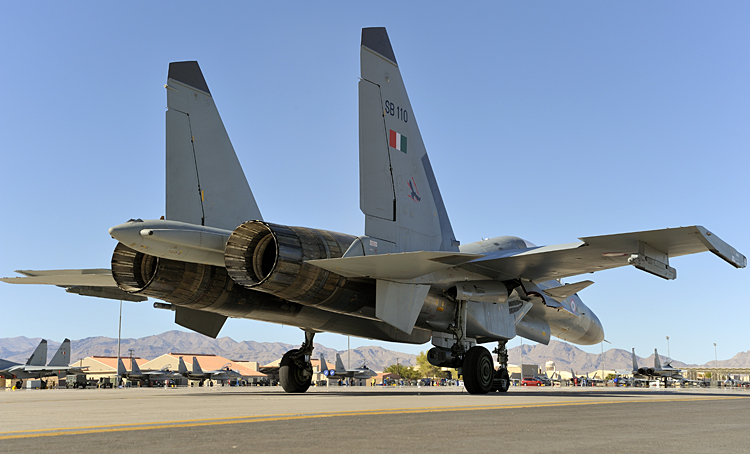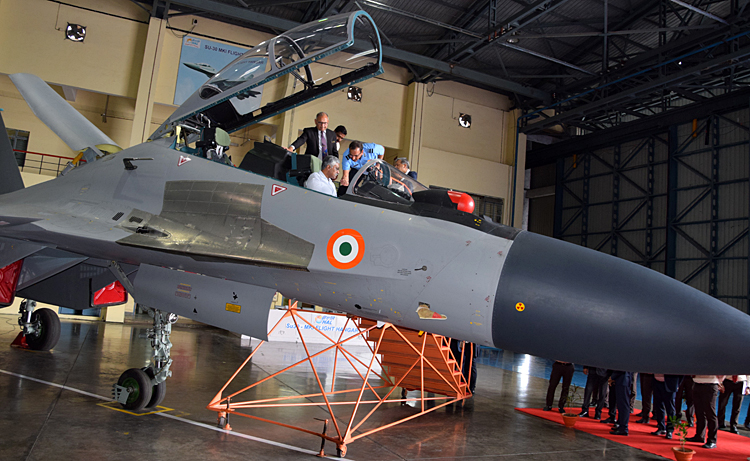INDIAN ARMED FORCES CHIEFS ON OUR RELENTLESS AND FOCUSED PUBLISHING EFFORTS

The insightful articles, inspiring narrations and analytical perspectives presented by the Editorial Team, establish an alluring connect with the reader. My compliments and best wishes to SP Guide Publications.

"Over the past 60 years, the growth of SP Guide Publications has mirrored the rising stature of Indian Navy. Its well-researched and informative magazines on Defence and Aerospace sector have served to shape an educated opinion of our military personnel, policy makers and the public alike. I wish SP's Publication team continued success, fair winds and following seas in all future endeavour!"

Since, its inception in 1964, SP Guide Publications has consistently demonstrated commitment to high-quality journalism in the aerospace and defence sectors, earning a well-deserved reputation as Asia's largest media house in this domain. I wish SP Guide Publications continued success in its pursuit of excellence.
Sukhoi-30 MKI Fighters' Upgrade
The IAF's upgrade plans include integrating advanced radars, avionics, longer-range weapons, and indigenous Active Electronically Scanned Array (AESA) radar technology to maintain air superiority
 |
The Author is Former Director General of Information Systems and A Special Forces Veteran, Indian Army |

The shortage of operational jet fighter squadrons in the Indian Air Force (IAF) is a well known fact. The Sukhoi-30 MKI fighter jets were originally designed by Russia's Sukhoi Corporation and built under license by India's Hindustan Aeronautics Limited (HAL). The aircraft is a variant of the Sukhoi Su-30 and is known for its heavy, all-weather, and long-range capabilities. HAL has been making progress in indigenising components of the Sukhoi Su-30 MKI, but certain high-tech materials and proprietary technologies remain sourced from Russia. This complicates the overhaul process, as HAL needs to navigate the complexities of integrating these components into the aircraft.
HAL has recently begun overhauling the Sukhoi Su-30 MKI aircraft, which was previously conducted by Russia, but currently has the capacity to overhaul only 12 aircraft per year, with plans to increase this to 25 annually.
HAL has recently begun to undertake overhaul of the Sukhoi Su-30 MKI aircraft, which earlier was being conducted by Russia. However, HAL currently has the capacity to overhaul only 12 aircraft per year. Government is planning to increase this capacity to 25 aircraft annually. But this expansion is still in progress. The backlog is exacerbated by the fact that many of these fighter jets are reaching or have exceeded their scheduled overhaul timelines, which are based on flying hours or age.
According to media reports of August 3, 2024, over 230 Sukhoi Su-30 MKI aircraft are currently awaiting overhauling at the HAL facility in Odisha. This backlog is primarily due to several factors, including the transition of overhauling capabilities from Russia to India, the need for increased capacity, and the complexities involved in the overhaul process.

The plan to upgrade Sukhoi-30 MKI fighter jets has faced challenges and delays due to sanctions on Russia over the war in Ukraine; impeding the planned upgrade of licensed 260-license-built Sukhoi Su-30 MKI fighter jets. The upgrade was intended to bring the Indian Su-30s on par with Russia's Su-30 SM2, the most advanced Su-30 variant. The IAF plans to extend the service life of its Sukhoi-30 MKI fighter jet fleet by over 20 years. The fleet currently consists of 272 twin-engine planes, which will be the mainstay of the force for at least the next 15-20 years. The extension of the service life will help the IAF maintain the fleet until around 2045-2050.
The upgrade of the Sukhoi-30 MKI fighter jets has faced delays due to sanctions on Russia over the war in Ukraine, impacting the planned enhancement of 260 license-built jets to match the advanced Su-30 SM2 variant.
The IAF's plan to upgrade its Sukhoi-30 MKI fighter jets includes incorporating advanced radars, avionics, longer-range weapons, and multi-sensor fusion technology. These upgrades are crucial to maintain IAF's air superiority and address concerns about the inadequacy of fighter aircraft compared to Pakistan and China whose fighter aircraft have Active Electronically Scanned Array (AESA) radar capabilities. These upgrades, including the development of indigenous systems to replace Russian systems, aim to enhance the capabilities of the aircraft.


One major upgrade includes the indigenous Infrared Search and Track (IRST) system, which offers several advantages, including improved sensor fusion and direct integration with weapon systems. This allows for better correlation of targeting data and the ability to feed the IRST system output to air-to-air missile sensors before launch. In addition, the IAF is working on upgrading the aircraft with indigenous advanced radars, avionics, and weapon systems. This will include the cutting-edge indigenous Active Electronically Scanned Array (AESA) radar called the 'Virupaksha', which is expected to be the most advanced radar among all Sukhoi-30 variants globally.
India and Russia are in talks to jointly produce Su-30 fighter jets for global export, marking a new phase in their defense partnership.
The Virupaksha radar can track targets in the air and on the ground with pinpoint accuracy, giving the Su-30 MKI a significant edge in any aerial encounter. It is a major step forward for India's self-reliance in defence technology. This project is part of a larger 65,000 crore rupee upgrade programme that aims to equip 84 Su-30 MKIs with advanced indigenous radars and weapon systems.
The delays in overhaul of the Sukhoi Su-30 MKI are no doubt significant because of reasons explained above. These will need to be addressed speedily by streamlining the overhaul process, which will ultimately benefit the operational readiness of the IAF's fleet. As important it is to initiate and complete upgrade of these fighter aircraft because the Sukhoi-30 MKI jets will continue to be a crucial component of the IAFs operational capabilities for the foreseeable future.
As mentioned in these columns earlier, India and Russia are in talks to jointly produce Su-30 fighter jets for global export, which was reported in mainstream media on July 11, 2024. This is being viewed as the next phase of defence partnership between the two countries; joint manufacturing and technology transfer.





